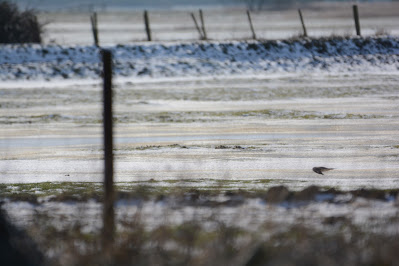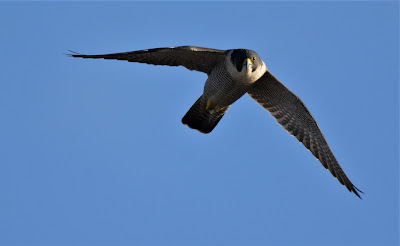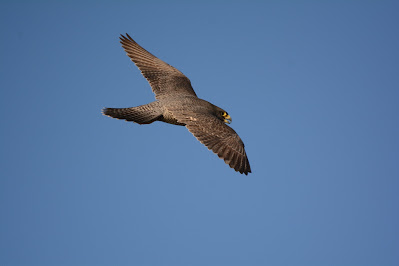On last Saturday myself and Paul undertook the 1st survey of the month for the Marshes, extreme conditions to say the least, -1 with a biting easterly 4-6 wind. Cold is an understatement with the wind, hard enough for us but for birds; this weather can be deadly with the ground covered by snow and the search for food.
It soon became apparent that many species were on my section where there was a lot of thick weed growth and cover from the wind, nearly 250 Skylarks, 30 odd Corn Buntings, 60 Meadow Pipits and a Reed Bunting flock of around 50.
Other species that soon became apparent were Common Snipe, with many waterways frozen they were also feeding in areas that I never see them desperately seeking food. Of course this number of Snipe, there had to be Jack Snipe amongst them and so it proved, I think I ended up with 4 and Paul had even more on his section.
On the raptor front, at the start of the survey, I was lucky enough to catch a fleeting glimpse of a female Merlin, low over the ground and very fast, she was no doubt trying to snatch one of the many Skylarks we had just passed by.
Other behaviour which may have just been opportunistic was seeing a Marsh Harrier surprising a flock of roosting Avocet over the sea wall and it looked like it made a play for one. Not really a pursuit specialist like Peregrine/Merlin, no doubt cold weather and hunger was playing its part.
Another good bird seen was a Cattle Egret, picked up distantly and eventually landing near the Cattle Corral.
A highlight for the Ducks was 7 Pintail dropping in to roost, not always regular here in the Bay.



















































